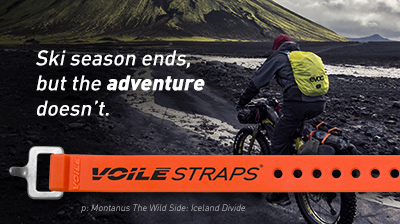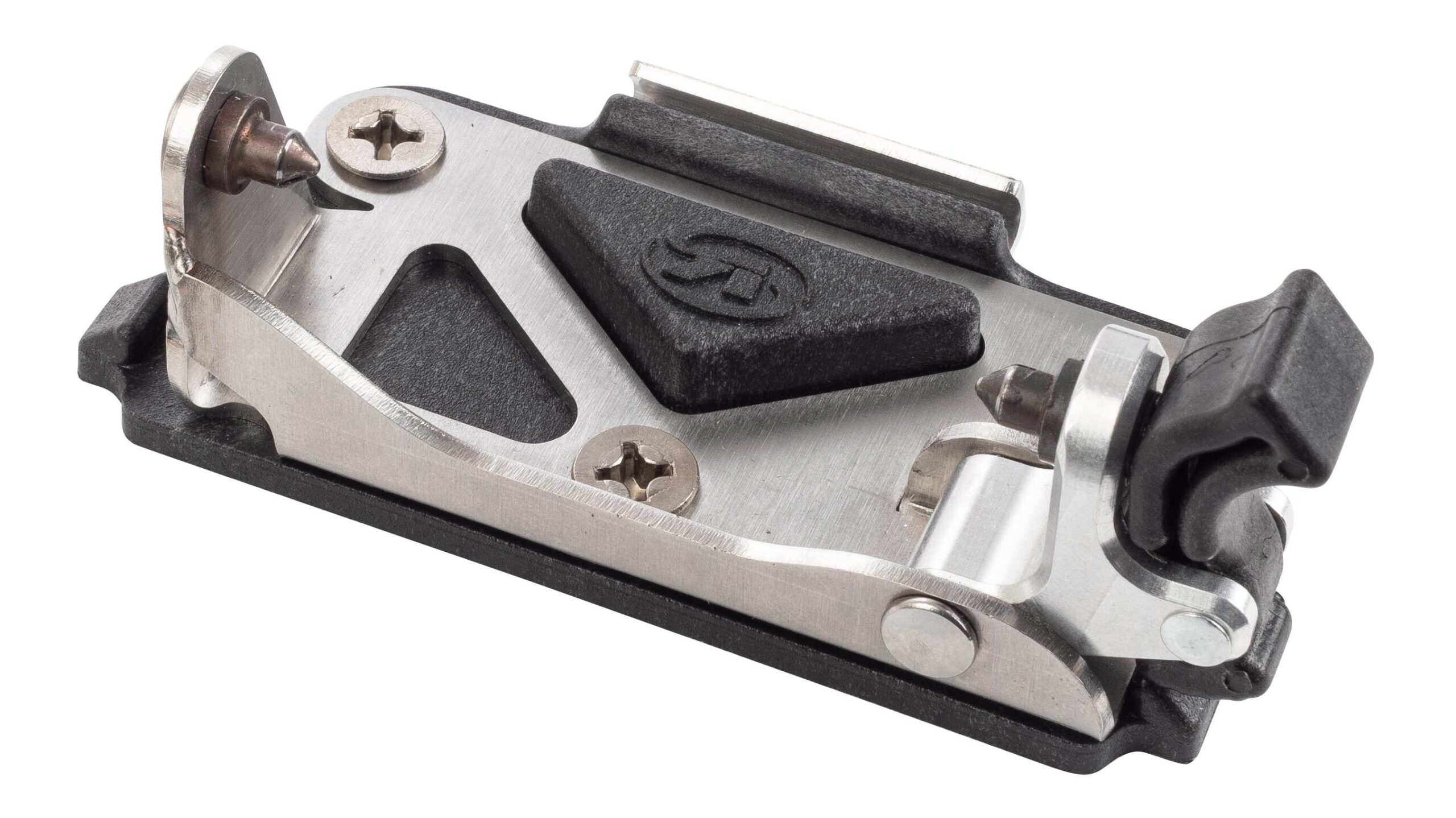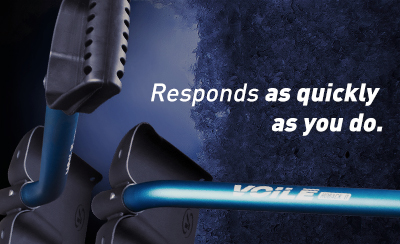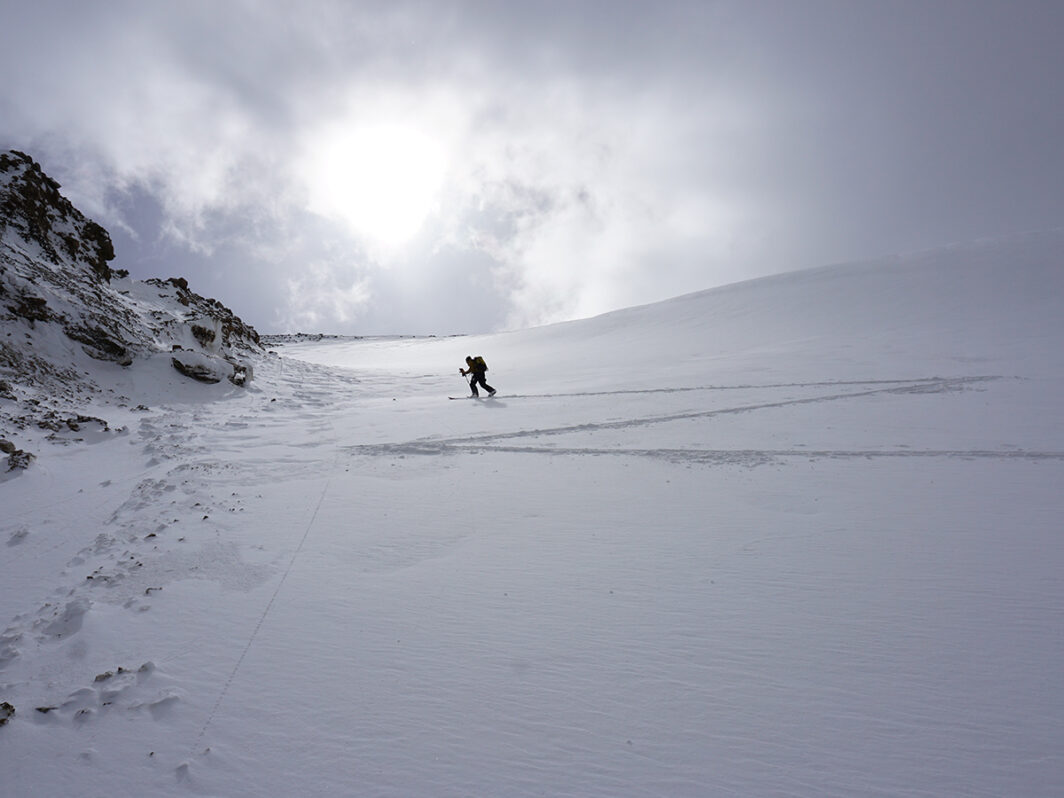
Voile TTS Binding FAQ
Share this Post
We introduced the Voile TTS Binding (Telemark Tech System) to our telemark binding lineup this 20-21 season. The TTS Binding evolved out of our relentless and disciplined pursuit of simple, lightweight and reliable designs.
SPECS
Sticking true to the Voile motto, the TTS sheds some serious g’s, weighing in at ~1130g (2.5 lbs) per pair. This makes the up more enjoyable while still making the most of your prowess on the descent. All three models, the Stiff, Tour, and Tour LT (Long Travel), share roughly the same weight specs. The Stiff and LT models may be slightly heavier- only a few grams at most- due to the larger wire diameter of the spring.
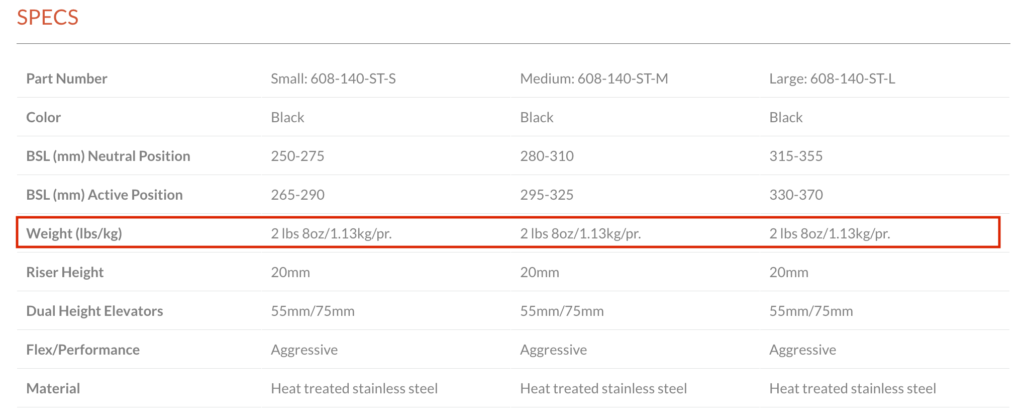
TOES
We developed this tech toe originally for our splitboard hardboot binding, the STS Tour Binding (Splitboard Tech System) – powerful and precise, ultralight and uncomplicated. This piece features a manual open lever (no spring tension). Because the toe is free pivoting, you have a huge range of motion for the climb.
WIRES
Unlike 75mm bindings that don’t engage until the heel has lifted, the Voile TTS binding engages immediately thanks to its underfoot wire. This immediate feedback allows for better control, carving, and balance. The result is a powerful and responsive ride in anything you and old ma’ nature throw at it.
By design on the toe plate, you can choose an active or neutral wire position. Note that the wire position is fixed once mounted! Confirm your bootsole length for desired wire position (active or neutral) using the spec table found here.* Not sure what size to get? Check out our Boot Manufacturer Size Guide.
*Voile recommends an authorized dealer for all binding mounts. Mounting instructions are written for shop technicians that have technical expertise in mounting telemark bindings.
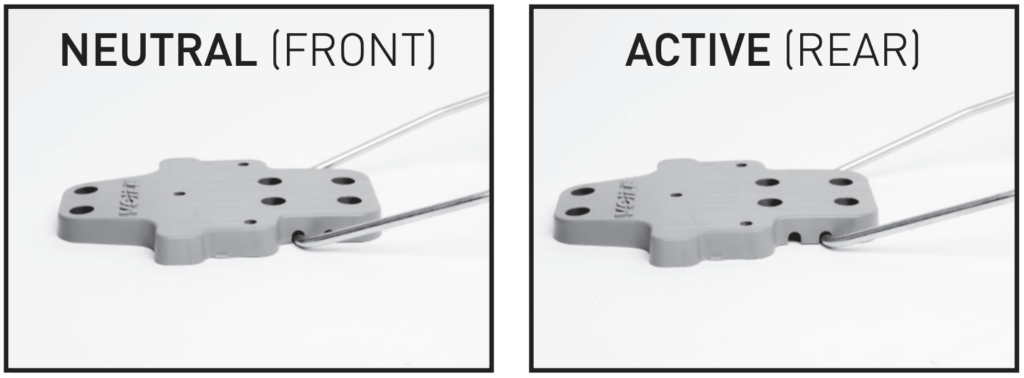
CARTRIDGES
The TTS comes in three different cartridges: Stiff, Tour, and LT (Long Travel). The Tour cartridge is the same spring that we use in our Switchback and Hardwire 3-pin bindings and is considered an all-mountain spring. The Stiff cartridge is the same spring used in our X2 binding (25% stiffer than the all-mountain). The LT is right between the two and is typically used on larger boots or those wanting more spring travel.

Constructed with heat-treated stainless steel and our six-hole mounting pattern, these bad boys can handle the abuse. As with our other telemark bindings, the TTS bindings are made in Utah, USA.
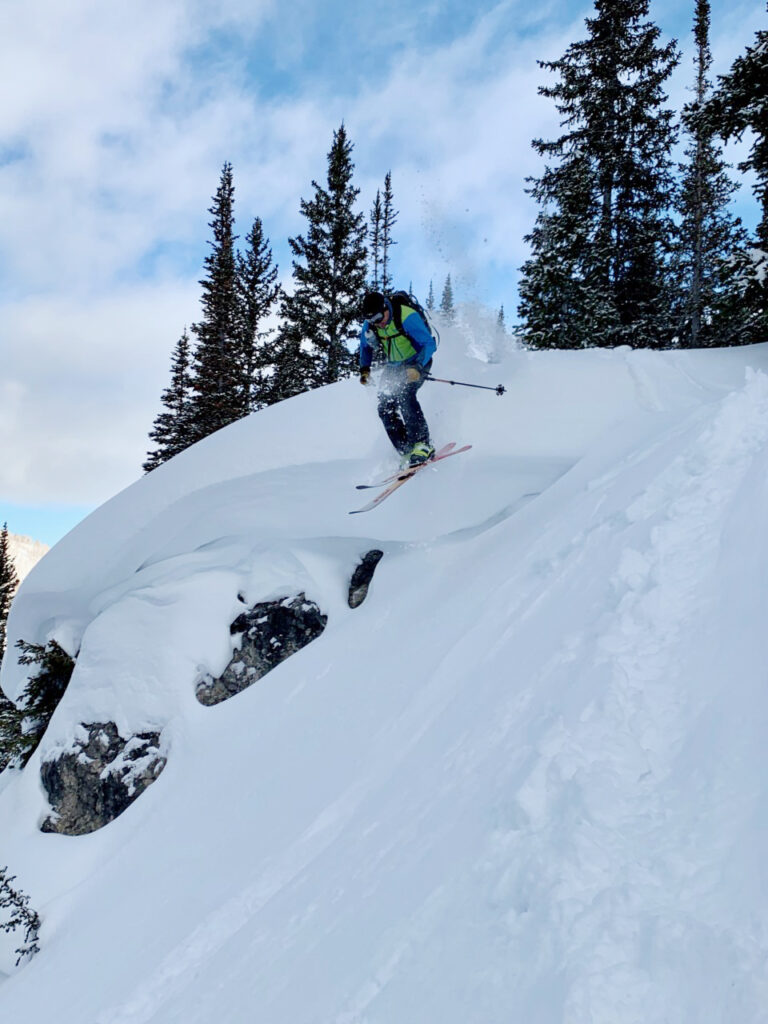
Voile TTS Binding FAQ
We solicited questions on the TTS and had our Production Manager and telemark extraordinary, Mark Christopherson, answer:
Q: What makes the front neutral and the rear active?
A: The further back you move the pivot on telemark bindings, the more active the binding feels. You have more resistance when lifting your heel off the ski. Since we have two positions, we called the forward one neutral and the rear position active. However, keep in mind that because of the under-foot routing, the binding feels more active than traditional bindings where the cartridges are to the outside of the boot.
Q: What boots? These seem stellar, but I really would want some old F1/3s or TXs I think?
A: I use Scarpa TX and TX Pro boots. Both work great, one is just a bit lighter. You obviously need tech fittings in the toe of the boot. You could choose to use an older F1 or F3 boots (with bellows), but you won’t get the flex like a boot specifically made for making drop-knee turns. They would ski fine making parallel turns.
Q: Since the base plate is quite large, is there a recommended minimum ski waist?
A: The widest part of the toe shim is to support the two outboard screw holes. I would use at least a ski with a 95mm waist with the TTS. You really have to lay the ski over on hard snow to have the wing touch the snow. In powder, you most likely won’t notice.
Q: Where do I put the springs when I climb up (touring mode)?
A: While touring, the user can lock off the heel assembly underneath the back lip of the heel pad and the 55mm wire will be resting on top of it. The user has access to both the 55 and 75mm climbing wires. When the user gets to the top of the climb, he/she can put the heel lever on the boot, rip skins, tighten boots, and ski.
Q: Do the springs remove for climbing?
A: No, the heel assembly will lock under the heel pad for ascending.
Q: Are those laterally stiff as NTN bindings?
A: With the Stiff springs, I would say yes. With the Tour springs, perhaps a bit less torsion than say the Outlaw.
Q: How does the power of the stiff compare to the stiffness of the 01 stiffy springs?
A: While I haven’t personally skied that particular spring, I am familiar with it. The spring tension is about the same and both are underfoot routed designs. However, because Voile uses a SS rod instead of a cable, the Voile will offer a bit more torsion than the BD 01 w/stiffy spring.
Q: What does its flex feel like compared to standard NTN bindings and 75mm bindings?
A: Since the TTS is an underfoot routed design, it skis much more active than a standard 75mm binding. Whereas I typically skied the Switchback X2 (stiffer spring), I found myself using the all-mountain (Tour) spring on the TTS system. The TTS system skis closer to traditional NTN bindings. We also offer a long travel spring for those with larger boots or if more spring travel is desired. The stiffness of it is between the Tour and Stiff springs.
Q: Does it take a ski crampon?
A: It will accept a Dynafit style crampon for now, but we will endeavor to make our own as well.
Q: What keeps the toes cam lever tight overtime or if bumped while skiing?
A: The lever interfaces with the shim to create a few levels of desired tension to keep you in the binding. On the tightest setting, we haven’t experienced or heard of anyone coming out of the binding while skiing. While I’m not saying you couldn’t, it hasn’t reared its head yet.
Q: What is this binding’s propensity to release, specifically in an avalanche?
A: Well, no real hard data here. If someone was involved in an avalanche being tossed and turned in many directions, I would give the binding a 50% chance of releasing. We make no claims of releasability.
Q: Does the TTS binding have the same mounting pattern as the Swithchback?
A: It has the same four holes as the Switchback, plus two others. It’s a six hole pattern.
Still have questions? Leave them in the comments section below.
WARNING: THE VOILE TTS IS NOT A SAFETY BINDING AND HAS NO RELEASE MECHANISM Backcountry /Telemark skiing is an inherently dangerous sport in which there is always the possibility of bodily injury and death. VOILE TTS bindings are not safety bindings and therefore do not decrease the inherent risk of injury associated with the sport of backcountry skiing. The user of this product is solely responsible for learning proper skiing techniques, avalanche awareness, and exercising good judgment. The manufacturer, distributor, wholesaler, and retailer are not liable for any personal injuries sustained by the use or misuse of this product.
Share this Post



